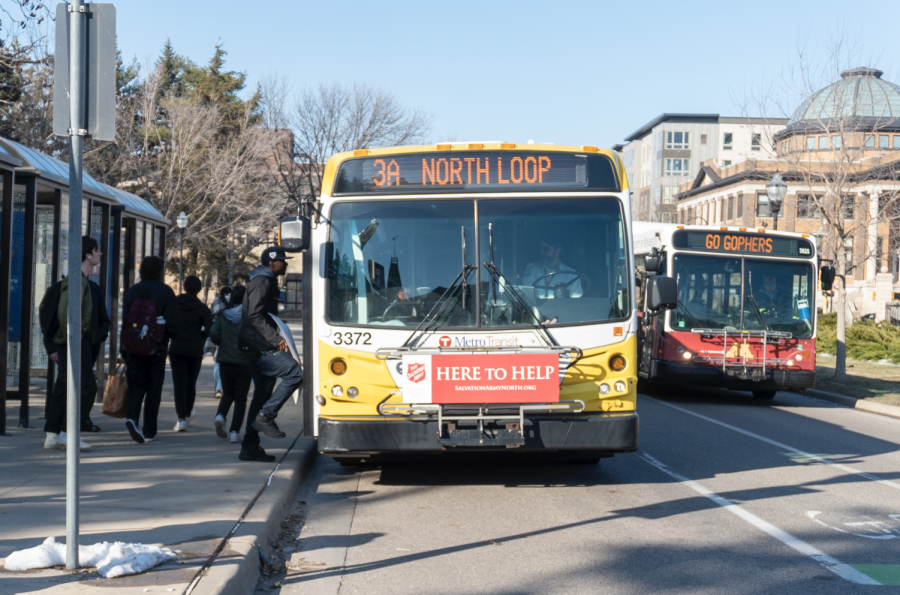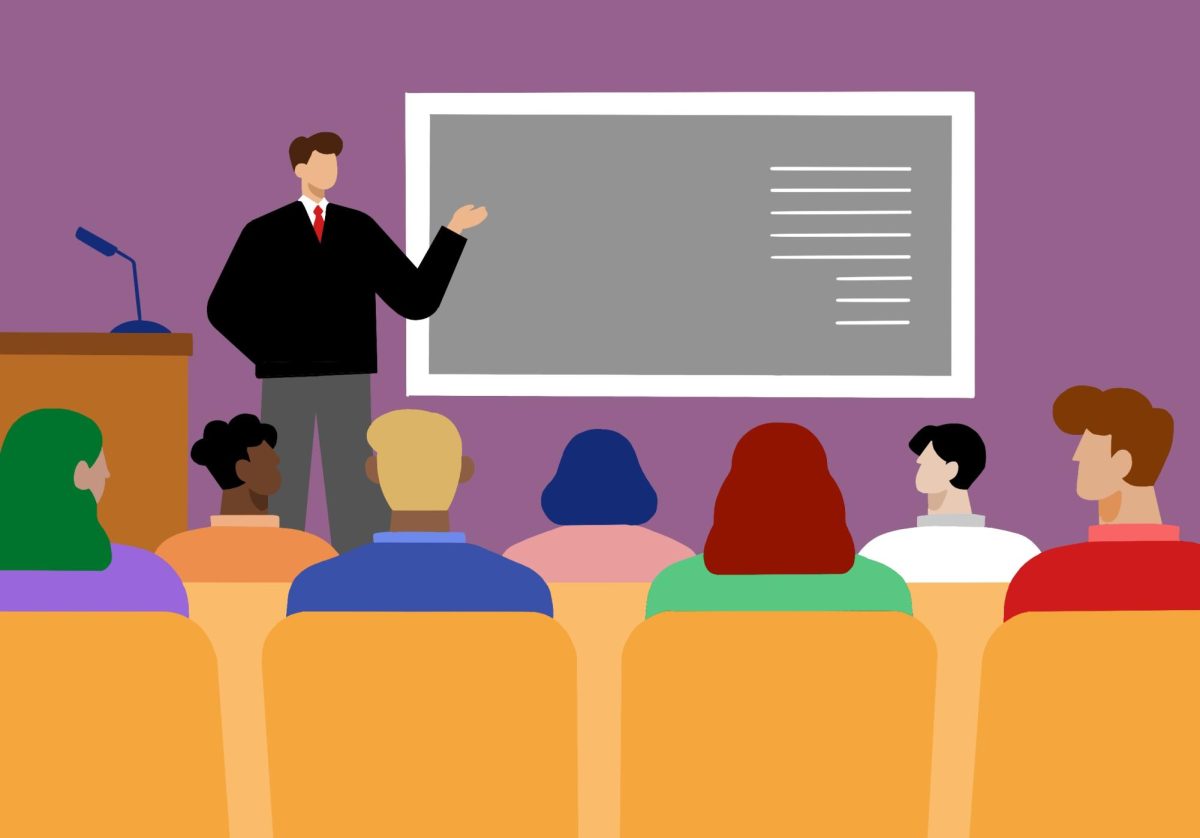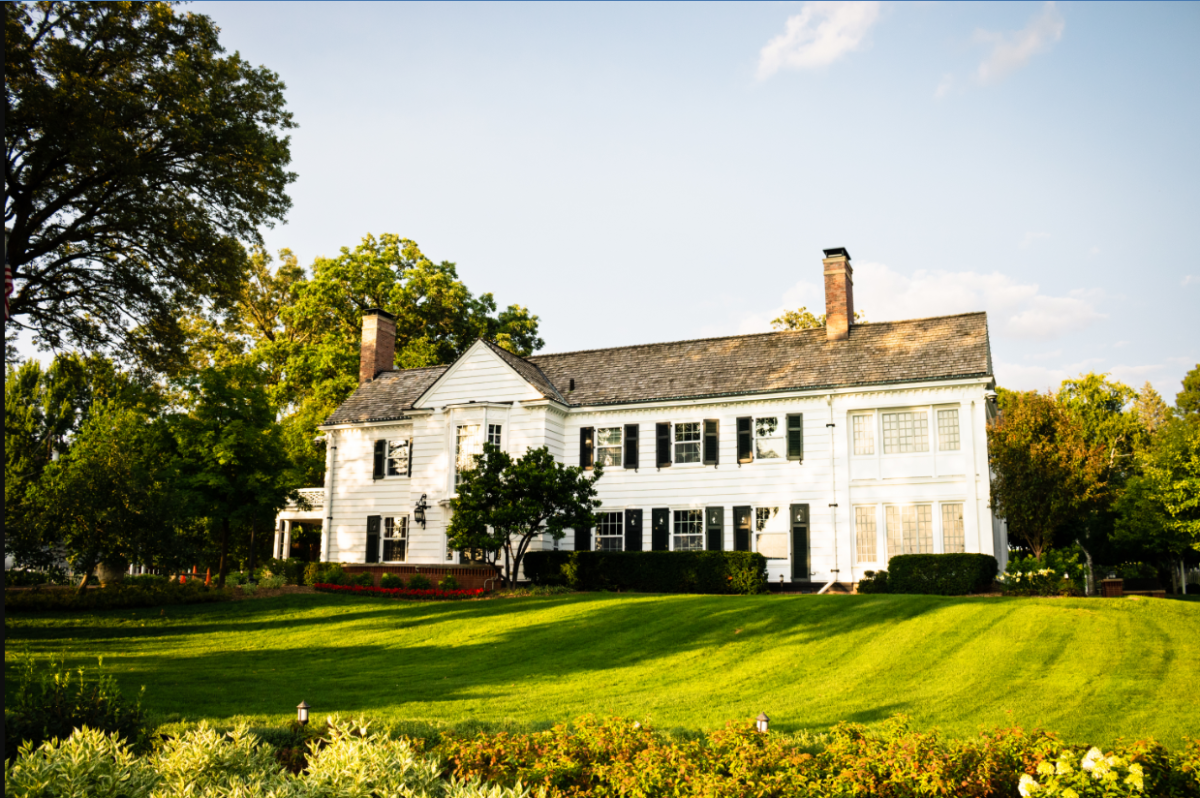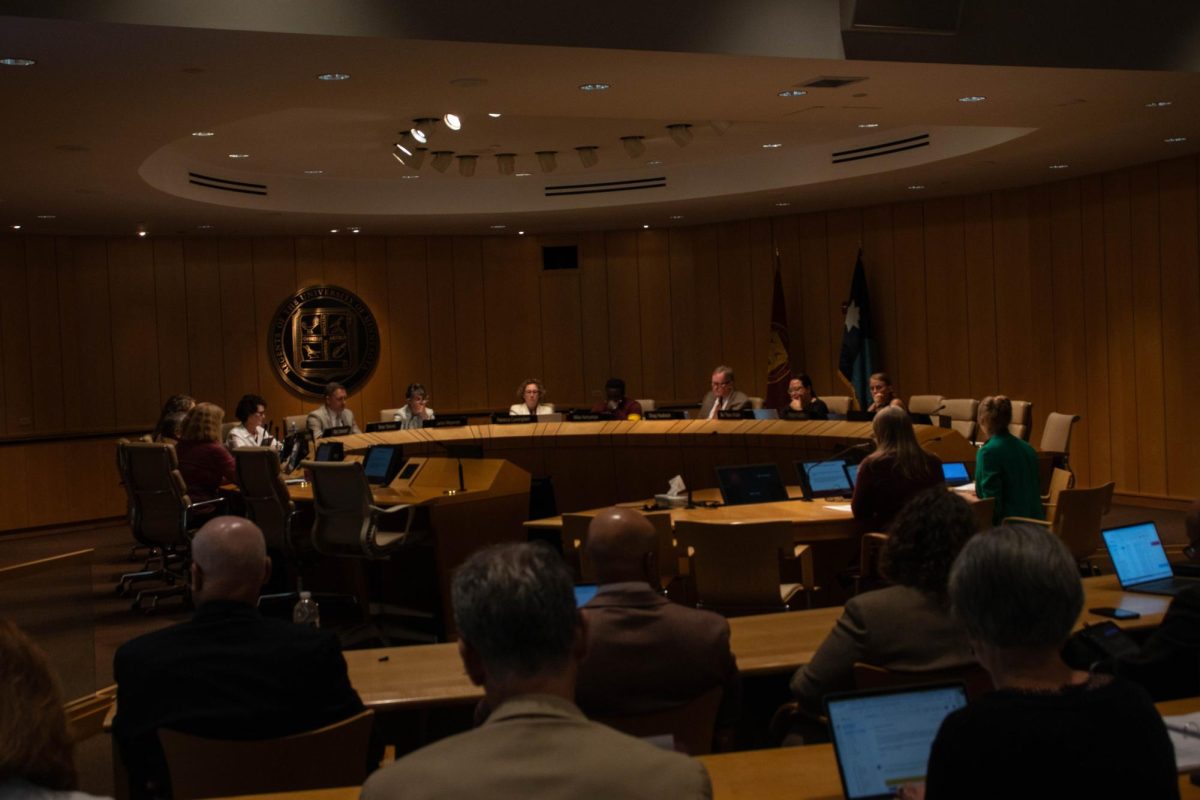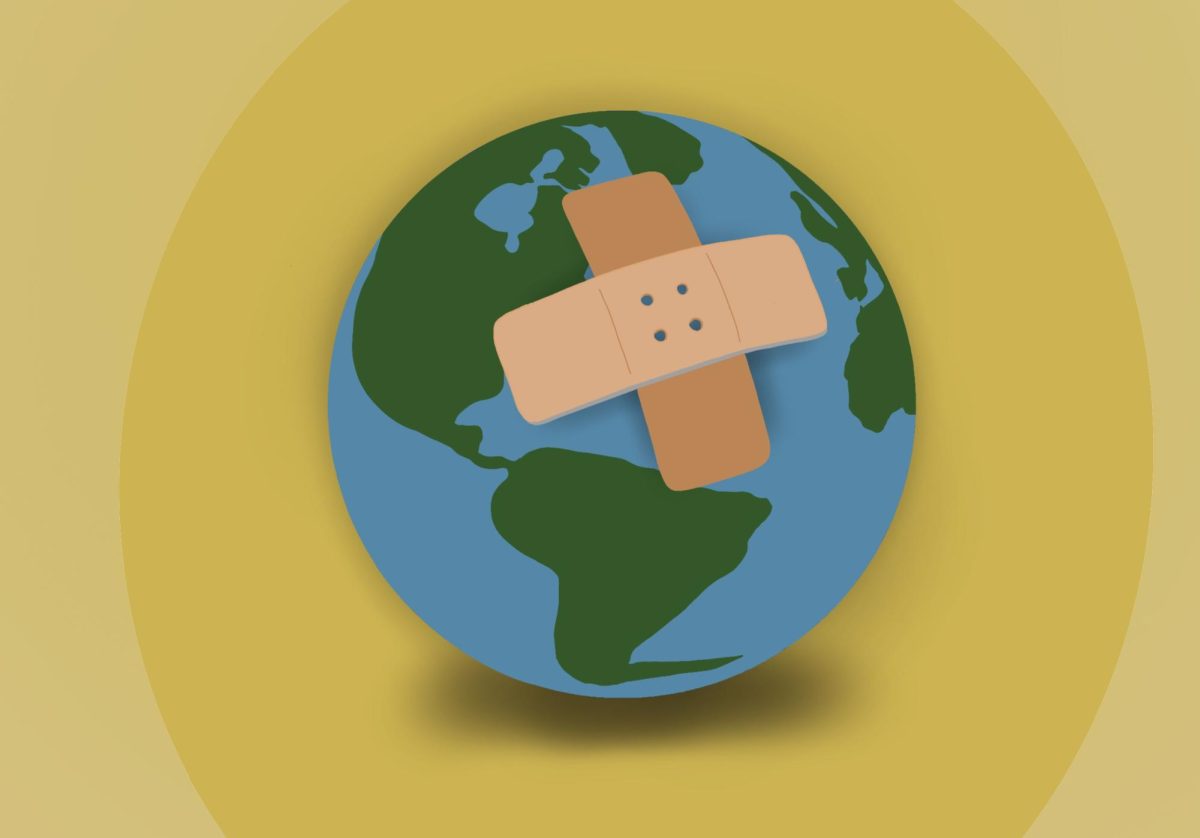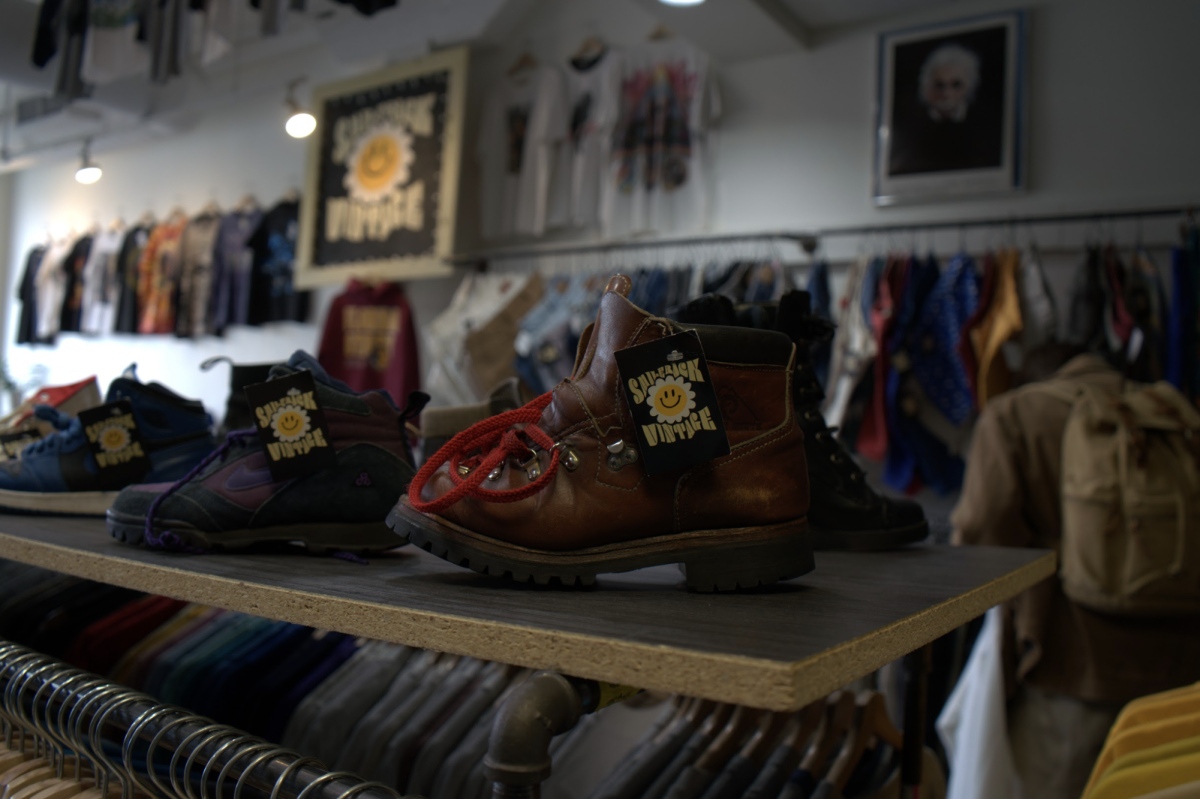From the high traffic Route 3 bus that traverses Como Avenue to one single ride on a Shakopee bus route, the Universal Transit Pass has been used for over 1 million rides since its inception last summer.
In its first year, the UTP enabled 1.8 million rides across well over one hundred routes, enabling University of Minnesota students to travel to internships, affordable grocery stores and more without a car. Earlier this year, the UTP expanded to cover public transportation for many University employees following union negotiations.
For University students and staff, removing the financial obstacle and no longer having to sign up and travel to pick up the physical card was a big deal, said Bill Lindeke, an urban studies lecturer at the University.
“It removes all those barriers because everybody already has a U Card,” he said. “It’s a pretty elegant solution to making it accessible and simple.”
Access to transportation benefits those who cannot afford cars, which cost car owners thousands of dollars a year, according to Lindeke. It also comes with peace of mind for not worrying about parking or being stuck in traffic.
“It’s a significant savings if you can go without one,” Lindeke said, who lived without a car for around a decade while he had a lower income.
Now that free public transportation is part of University staff benefits packages, it is a “pretty nice subsidy,” according to Lindeke.
Lindeke said he rides his bike as much as he can because it is healthier and enjoyable, but winter weather is a considerable barrier for safe biking, so he is also a frequent rider of the Green Line and Route 3 bus.
Historically, transit ridership trends higher in the winter, and in many Canadian cities, extra money goes into heated bus shelters, according to Lindeke.
Bus Rapid Transit (BRT) lines are an exciting network from Metro Transit, Lindeke said, and the results he has seen so far show it is more convenient for riders. So far, the A, C and D lines are up and moving with nicer buses, nicer shelters and bus stops and routes designed for speed. The routes connect some of the metro’s second ring suburbs to transit hubs like downtown Minneapolis, the Rosedale Transit Center and the Mall of America.
The A, C and D lines saw nearly 20,000 rides from UTP users in the program’s first year.
“There’s not a lot of other cities that are doing these innovative bus projects,” Lindeke said.
Lindeke added he considers it to be an efficient upgrade to local public transportation. Riders pay while waiting and can board immediately upon the buses’ arrivals — similar to the Gopher buses at the University.
There is room for improvement, though, with dedicated bus lanes and signal priority, when a train or bus gets the green light at an intersection over other traffic, according to Lindeke.
“If you want the system to be really good, you have to give advantages to transit,” Lindeke said.
How accessible a public transit system is depends on where your trip begins, said Yingling Fan, professor of urban and regional planning at the University, and being on the University campus allows students to start at a central location in the local transit system.
On the East and West Banks, students can hop on the light rail and the multiple excellent bus routes on University Avenue, Fan said.
Though incomparable to the public transportation in cities like Washington, D.C., San Francisco and especially New York City, the Twin Cities is one of the top metropolitan areas for public transit systems, according to Fan.
Giving students a more affordable option to access public transportation also provides an equal footing for those who may be traveling longer distances, such as to internships, and students who only rely on shorter trips, like getting around campus and the surrounding neighborhoods, Fan said.
For Tom Hubbard, a fourth-year marketing major, the UTP has made his frequent trips to the Carlson School of Management from Pioneer Hall, where he works as a community advisor, much easier.
It has also been handy for making trips to downtown Minneapolis for sporting events at U.S. Bank Stadium or Target Field, Hubbard added.
“You can just hop on and go,” Hubbard said.
Hubbard said he rarely uses the standard Metro Transit buses, instead favoring the light rail’s Green Line that takes him right where he needs to go on both sides of the river, especially in the icy winter months that make trips on foot more difficult.
Before the UTP, Hubbard relied on the limited access light rail cards the University provided for students riding between the West Bank, East Bank and Stadium Village stops.
Despite occasional delays, Hubbard said he has found Google Maps to be the most accurate for arrival times.
Looking toward the future
After the Universal Transit Pass was made available to students, the University’s Undergraduate Student Government’s (USG) focus shifted to ensuring that paying students would have all the information they need to use it effectively, said USG’s infrastructure committee director, Daniel Tobias.
USG spread the word on its social media last year on how to navigate the activation process, which was fairly complicated, Tobias said. Now, only first-year and transfer students need to activate their U Cards as passes each year.
USG’s infrastructure committee is working towards more specific goals now, like getting maps up in bus shelters showing Gopher Bus and Metro Transit routes to take away the strain of students wondering where they can board buses, Tobias said.
“There was a lot of confusion, some of the miscommunications between the drivers and the students and getting the technology to work,” Tobias said. “A lot of that is getting better this year … in subsequent years, there’ll be less and less issues as people become more familiar with the technology and the process of activating it.”
USG has also continued communication with Parking and Transportation Services (PTS) about safety concerns, who then pass along input in regular meetings with Metro Transit, Tobias added. That includes making strides in increasing police presence at light rail stations where crime is prevalent and listening to student feedback to add more bus stops on busy routes.
The committee encourages students to give their feedback in surveys from Metro Transit as well as USG, Tobias added.
Metro Transit’s incentive with the program has been to encourage ridership, said Drew Kerr, Metro Transit communications manager.
“We want people to be using the system that’s available to them, and that’s especially true at the University of Minnesota,” Kerr said. “We’re energetic and hoping that it’s something we want to continue to pursue.”
Metro Transit collects ridership data automatically with lasers at the doors of each train car and bus that record when someone passes through in addition to taps from bus passes like the U Card, Kerr said.
Gathering that information is important for understanding how much students are using it, Kerr added, which encourages Metro Transit to continue the program and possibly expand on it.
“We’re constantly looking at past programs and trying to understand what’s working and what isn’t, where we can improve and where we can focus efforts,” Kerr said.
To address safety concerns, Metro Transit has recently brought on initiatives like the transit service intervention program, which connects community organizations for mental health, unsheltered homelessness and substance abuse with people experiencing those issues on the light rail, Kerr added.
Metro Transit is continuously recruiting police officers for its department, similar to many police departments across the country at the moment, according to Kerr. Metro Transit Police Department currently employs 107 officers.
Starting in December, its Community Service Officers, who have previously been a presence on transit in case of emergency, will begin checking for unpaid fares and issuing administrative citations, Kerr said. The citations will be non-criminal and come with small fines as opposed to the $180 misdemeanor citations that were sent to the courts.
Metro Transit partners closely with the University of Minnesota Police Department to make sure they have a presence on the transit within their jurisdiction on and around campus, he said.
Another upcoming change will be to the code of conduct, which determines rider expectations like playing music loudly, eating on the train and taking up more than one seat, Kerr added.
Rolling out the program
The UTP goes back to 2015, when PTS was in discussion with USG and Metro Transit about replacing the U Pass with chipped U Cards. The next year, PTS and Metro Transit agreed that newly issued student identification cards would be equipped with the technology to be used as a bus pass, said Ross Allanson, director of the University’s PTS.
At the time, getting a piece of plastic into the hands of 40,000 transportation-fee-paying students was a considerable challenge, but it made rolling out the UTP program last year far easier, Allanson said.
Previous University presidents Eric Kaler and Joan Gabel wanted to be sure there was strong student support for a program involving a mandatory fee, Allanson said. That process involved meeting with representative student governments, town halls and surveys. In many groups, about nine in 10 students were in favor.
The agreement with Metro Transit includes a fixed payment amount the University divides across its student body, Allanson said, resulting in the $45 per semester already included in student fees. Paying for the spring semester also covers the summer months.
Not every student group pays the transportation fee, Allanson said, such as international students. They wanted to take advantage of the program, too, so the University was able to allow students who do not pay the fee to opt in.
This year, the University expanded the UTP to many benefits-eligible employees, and some other employees can opt into the benefits, Allanson said. The University employs roughly 20,000 people.
Rolling the program out to staff involved negotiating with unions and several other steps, Allanson added.
Over half of the students who are eligible for the UTP have used it at least once, Allanson said, and he considers the program very successful.
“We’ve got students who I have personally talked to that have been very thankful because they can now get to and from campus,” Allanson said.
Now, students have been able to travel to reasonable grocery stores instead of relying on convenience stores close to campus, according to Allanson. The UTP has allowed students to use regular transit, not just Gopher buses, when moving around campus.
Beyond the UTP, the University is aiming to reduce tailpipe emissions for its Climate Action Plan by purchasing hybrid and electric buses, Allanson said. Another focus is bringing in micro transit, on-demand service that would allow students to request a ride from point to point.
USG’s involvement in bringing about the UTP was in advocacy for the previous six years and collecting this information on student support for the program, said Shashank Murali, USG’s president and former infrastructure committee director.
USG collected data through surveys and worked with PTS to determine what benefits it could bring to students, Murali said. The infrastructure committee underwent a social media campaign to discuss the benefits of the UTP and rally students.
Access to jobs and internships and shopping at affordable grocery stores have been some of the biggest advantages of the program, Murali said. This aligned with data from USG surveys over the last few years showing students thought accurate, reliable transportation would help with food insecurity and campus safety.
The success of the UTP proved to students that the fee increase may be a strain, but in the long run would have great benefits for the entire student body and in future years, Murali said.
Murali added he personally received messages from friends and strangers who expressed gratitude that they could now go to their internships in different cities.
“For so many students, it’s been game changing,” Murali said.










